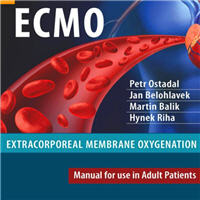Tag: treatment
Hydroxychloroquine Not Associated With Decreased Risk for COVID-19 Hospitalization
Results of a multicenter, double-blinded, randomized controlled trial found no evidence to support the use of hydroxychloroquine for COVID-19 infection in the outpatient setting. These findings were published in The Lancet... read more
Setting up a Rescue ECLS Program
Extracorporeal life support (ECLS) is a high-risk, lifesaving medical treatment that is typically limited to centers that can support a comprehensive ECLS program. Rescue programs can bridge the gap in care between ECLS centers... read more
Effect of Antiplatelet Therapy on Survival and Organ Support-Free Days in Critically Ill Patients With COVID-19
Among critically ill patients with COVID-19, treatment with an antiplatelet agent, compared with no antiplatelet agent, had a low likelihood of providing improvement in the number of organ support–free days within 21 days. The... read more
Probiotics for the Prevention of Ventilator-Associated Pneumonia
Presently, there is conflicting evidence regarding the efficacy of probiotics in the prevention of ventilator-associated pneumonia (VAP). This meta-analysis was conducted to update current clinical evidence and evaluate the... read more
Prevalence of COVID-19-Associated Pulmonary Aspergillosis
First reports of cases and case series of COVID-19-associated pulmonary aspergillosis (CAPA) emerged during the first months of the pandemic. Prevalence rates varied widely due to the fact that CAPA was, and still remains,... read more
Physiological Responses to In-Bed Cycle Ergometry Treatment in ICU Patients with External Ventricular Drainage
These data suggest that supine CE in a heterogeneous cohort of neurocritical care patients with EVDs is safe and tolerable. Larger prospective studies are needed to determine the efficacy and optimal dose and timing of supine... read more
High Dose Insulin and Euglycemia Therapy for Beta-adrenergic Receptor Treatment and Calcium Channel Antagonists Overdose
High dose insulin with dextrose supplementation is indicated for patients with calcium channel blocker and beta blocker overdose and signs of cardiac toxicity. Mechanisms are not completely elucidated, but mostly related... read more
Hemodynamic Management Challenges of Septic Shock
Sepsis is one of the main causes of admission to the Intensive Care Unit (ICU). It is defined as a life-threatening organ dysfunction, caused by dysregulated host response to infection (Singer et al. 2016). Septic shock... read more
General Anesthesia vs. Sedation Using Hemodynamic Control During Intraarterial Treatment for Stroke
The functional outcomes 3 months after endovascular treatment for stroke were similar with general anesthesia and sedation. Our results, therefore, suggest that clinicians can use either approach. Of 351 randomized patients,... read more
Music Therapy Intervention to Treat Sedation-Related Delirium in Critical Care
Sedation is an essential component of treatment for some patients admitted to the intensive care unit, but it carries a risk of sedation-related delirium. Sedation-related delirium is associated with higher mortality and... read more
Higher Dose Antibiotic Shown Safe in TB Patients Likely More Effective in Treating Deadliest Form of TB
A Johns Hopkins Children’s Center-led study in animals suggests that high doses of a widely used antibiotic called rifampin may safely treat and reduce the duration of treatment for the deadliest form of tuberculosis that... read more
Sepsis is scurvy? Vitamin C, Thiamine, and Steroids
I have avoided commenting on vitamin C for sepsis, because commentary seemed rather unnecessary. The hype was obviously ridiculous. The chances of it helping were clearly low. The evidence of benefit was negligible. Others... read more
HFNO Alone or Alternating with NIV in ARF Patients
In critically ill immunocompromised patients with acute respiratory failure (ARF), the mortality rate did not differ between HFNO alone and non-invasive ventilation (NIV) alternating with high-flow nasal oxygen (HFNO). However,... read more
Obstructive Airway Diseases: Role of Lipid Mediators
Incidences of inflammatory airway diseases are on the rise across the world. Existing therapeutic options are ineffective, unsafe, and expensive, and severe cases are nonresponsive to conventional therapy. Therefore, it is... read more

Association Between Dexamethasone Treatment for COVID-19 Patients and Rates of Hospital Readmission and Mortality
Current guidelines recommend use of dexamethasone, 6 mg/d, up to 10 days or until discharge for patients hospitalized with COVID-19. Whether patients who received less than 10 days of corticosteroids during hospitalization... read more
Sotrovimab Effect Among High-risk COVID-19 Patients
Among nonhospitalized patients with mild to moderate COVID-19 and at risk of disease progression, a single intravenous dose of sotrovimab, compared with placebo, significantly reduced the risk of a composite end point of... read more
Critically Ill Pregnant Women with COVID-19: Management and Outcome
Coronavirus disease 2019 (COVID-19)-infected pregnant women are at higher risk of intensive care unit (ICU) admission and mechanical ventilation. Because reports describing the clinical course and management of critically... read more
Percussion Pacing – An Almost Forgotten Procedure for Hemodynamically Unstable Bradycardias?
More than 80 years after its first description by Eduard Schott, percussion (fist) pacing remains a little known procedure even though it represents an instantly available and easy to perform treatment for temporary emergency... read more
Effect of Bradykinin Receptor Antagonism on ACE Inhibitor-associated Angioedema
This study compared the effect of placebo versus the bradykinin B2 receptor antagonist icatibant on symptoms of ACE inhibitor–associated angioedema in a mixed race population of patients. The study does not support the... read more
Buprenorphine-Precipitated Opioid Withdrawal in the ED
Buprenorphine-precipitated opioid withdrawal is seen in patients physically dependent on opioids who have recently taken full-agonist opioids and are then administered buprenorphine. Patients with severe withdrawal commonly... read more
Clinical, Biological and Molecular Aspects of COVID-19
The novel coronavirus 2019 (COVID-19) has caused a serious global pandemic in just eight months. Nearly every country and territory in the world has been affected by the virus. The virulence and infection rate of the... read more

Balanced Crystalloids Probably Reduce Mortality in the Critically-Ill
As remarked by the authors of the recent PLUS trial, a systematic review and meta-analysis of randomized controlled trials comparing balanced resuscitation fluid to 0.9% saline was reported in the New England Journal of Medicine... read more









